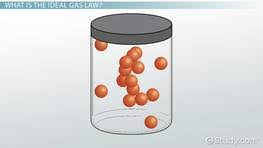Introduction: Making Sense of Gas Behavior
If you’ve ever taken a chemistry or physics class, chances are you’ve come across the Ideal Gas Law. It’s a key concept that helps explain how gases behave under different conditions. But crunching the numbers by hand can be time-consuming, especially when you’re juggling pressure, volume, temperature, and moles. That’s where an ideal gas law calculator becomes a handy tool. Whether you’re a student, a teacher, or just someone curious about science, this article will walk you through what the Ideal Gas Law is, how it works, and how to use a calculator to simplify your work.
What Is the Ideal Gas Law?
The Ideal Gas Law is a mathematical formula that relates the pressure, volume, temperature, and number of moles of a gas. The equation is written as PV = nRT, where:
- P stands for pressure
- V is volume
- n is the number of moles
- R is the gas constant
- T is temperature in Kelvin
This law assumes the gas is “ideal,” meaning it follows the behavior outlined by the equation without deviation. In reality, gases don’t always behave perfectly, especially under extreme temperatures or pressures, but the law works well for most everyday conditions.
Why Use an Ideal Gas Law Calculator?
Solving the Ideal Gas Law manually can involve several steps, including unit conversions and rearranging the formula depending on which variable you’re solving for. An ideal gas law calculator simplifies this process by allowing you to input known values and instantly calculate the missing one. It saves time, reduces errors, and makes learning or applying the formula much easier.
This tool is especially helpful in lab settings, homework assignments, or even when exploring real-life examples like inflating a balloon or understanding how tire pressure changes with temperature.
How to Use the Calculator Effectively
To use an ideal gas law calculator, you typically need to input three of the four main variables: pressure (P), volume (V), temperature (T), or number of moles (n). The calculator will then compute the missing variable using the Ideal Gas Law formula.
Be sure to:
- Use consistent units (e.g., pressure in atmospheres, volume in liters, temperature in Kelvin).
- Convert Celsius to Kelvin by adding 273.15.
- Select the correct value for the gas constant (R), depending on your units.
For example, if you’re trying to find the pressure of a gas in a container, input the number of moles, the temperature, and the volume, and the calculator will do the rest.
If you’re new to this concept, you might want to check out a basic chemistry formulas guide to get a better understanding of how different laws relate to each other.
Benefits for Students and Professionals
Using an ideal gas law calculator not only helps with homework and labs but also builds a deeper understanding of how gases behave. It’s a great learning aid for students and a quick reference for professionals in fields like chemistry, engineering, or environmental science.
Another helpful resource is a step-by-step tutorial on solving gas law problems, which can give you more confidence when doing manual calculations.
Conclusion: Simplify Science with the Right Tools
The Ideal Gas Law may sound intimidating at first, but with the right tools, it becomes much easier to grasp. An ideal gas law calculator helps streamline the process, letting you focus on understanding concepts instead of getting stuck on calculations. Whether you’re in the classroom or applying the law to real-world problems, having a reliable calculator makes learning faster, easier, and more enjoyable.



